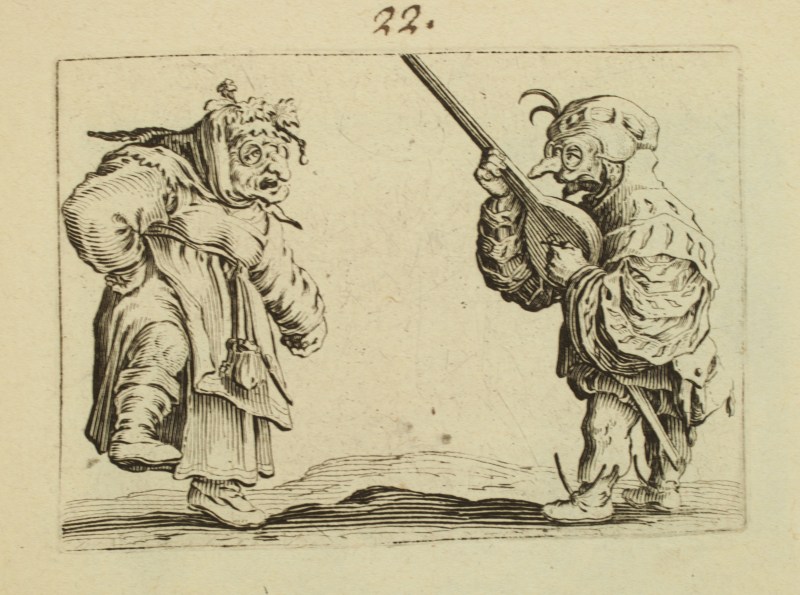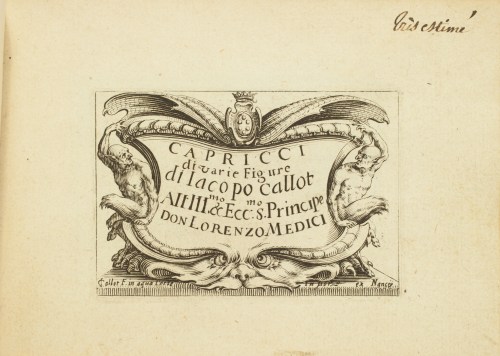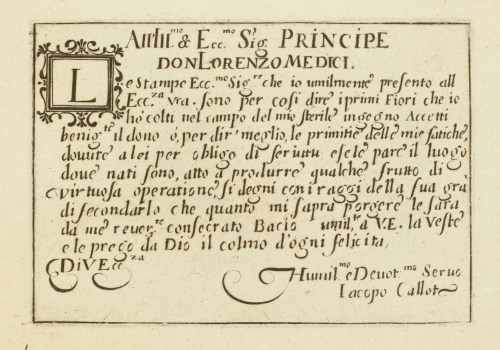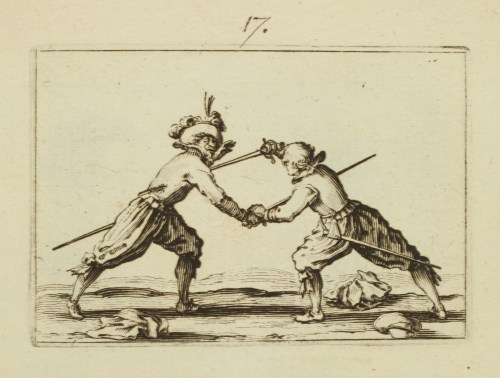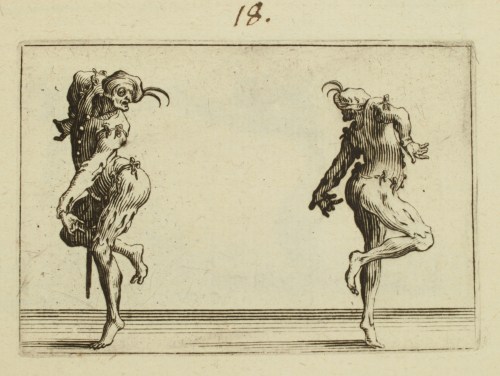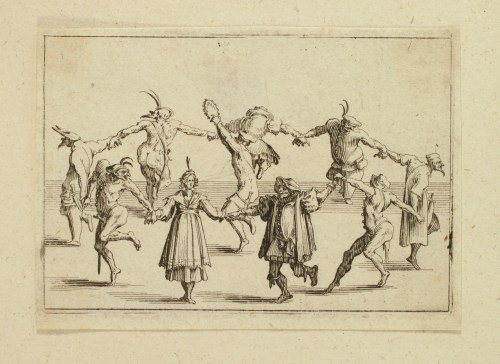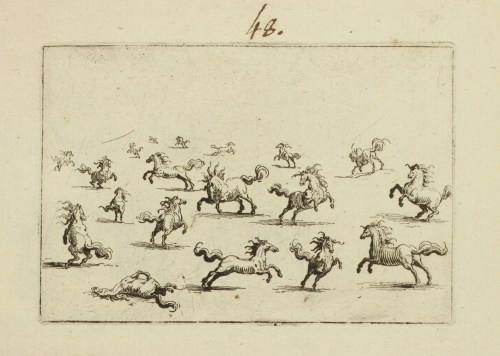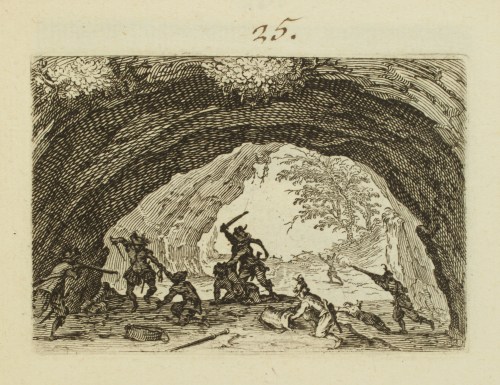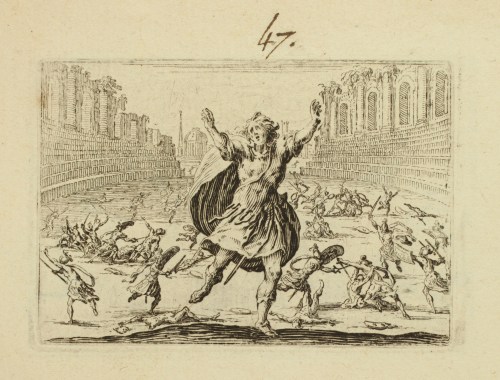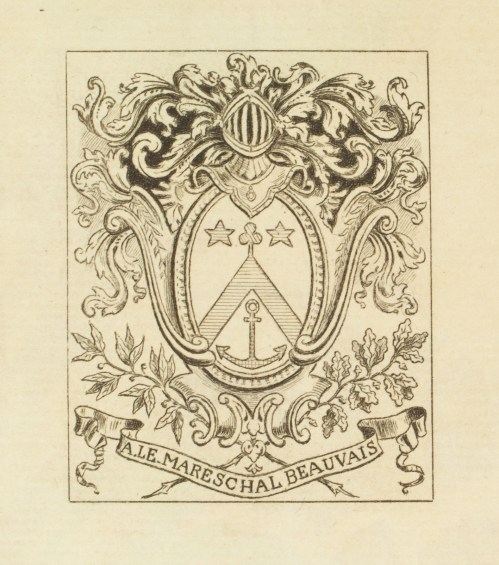Jacques CALLOT (1592 - 1635): Les Caprices, 2nd series
SOLD
Series of 50 plates (1 title, 1 dedication and 48 etchings), Lieure 428 to 477.
Impressions of the 1st state (of 2), the title plate before the address of Israël Silvestre, the etchings before the numbers.
Volume in-12 (105 x 145 mm), full calf; ornate spine, red morocco title-piece bearing the title figures by callot; small antique label glued to the bottom of the spine bearing the reference K14; marbled paper endpapers; bookplate on the first flyleaf (18th century binding). Binding in good condition.
Superb impressions printed on watermarked laid paper (part of a double C cut by the Cross of Lorraine, a watermark reported by Lieure for "the first edition of the series"). Good margins to all plates, thread margins to the last (La Ronde, Lieure 437) which has been mounted on the last leaf. An impression of the 2nd state (of 2) of Lieure 475 (La Course de chars) has been bound before the impression of the 1st state. The impressions are numbered in pen and ink in the upper margin. Excellent overall condition of all plates, very fresh.
Provenance: Printed bookplate of Alexandre Le Mareschal (1802-1875), of Beauvais.
The Caprices series is one of Callot's best-known works. It comprises 50 etchings with a wide variety of subjects: studies of figures depicted twice, in line and with the drawing shaded, sketches, views of Florence and its surroundings, grotesque dancers, duellists, Commedia dell'arte pants, etc. Lieure singles out in particular the views of Florence's squares, "small masterpieces of a hitherto unknown genre. Callot was able to fit an entire world into a small space. There's a carousel, a horse race, a chariot race, a balloon game, a fireworks display, etc." The entire series is "a marvel of composition and drawing, a prodigy of etching, of incomparable finesse and charm" (Lieure 214-263, 428-477, translated by us).
This series, etched for the first time by Callot in Florence, was a great success, which explains why he decided, on his return to Nancy, to etch it a second time in its entirety on more resistant copper, enabling larger print runs. The impressions before the numbers date from the 17th century, the numbers having been added by Fagnani in the early 18th century.



